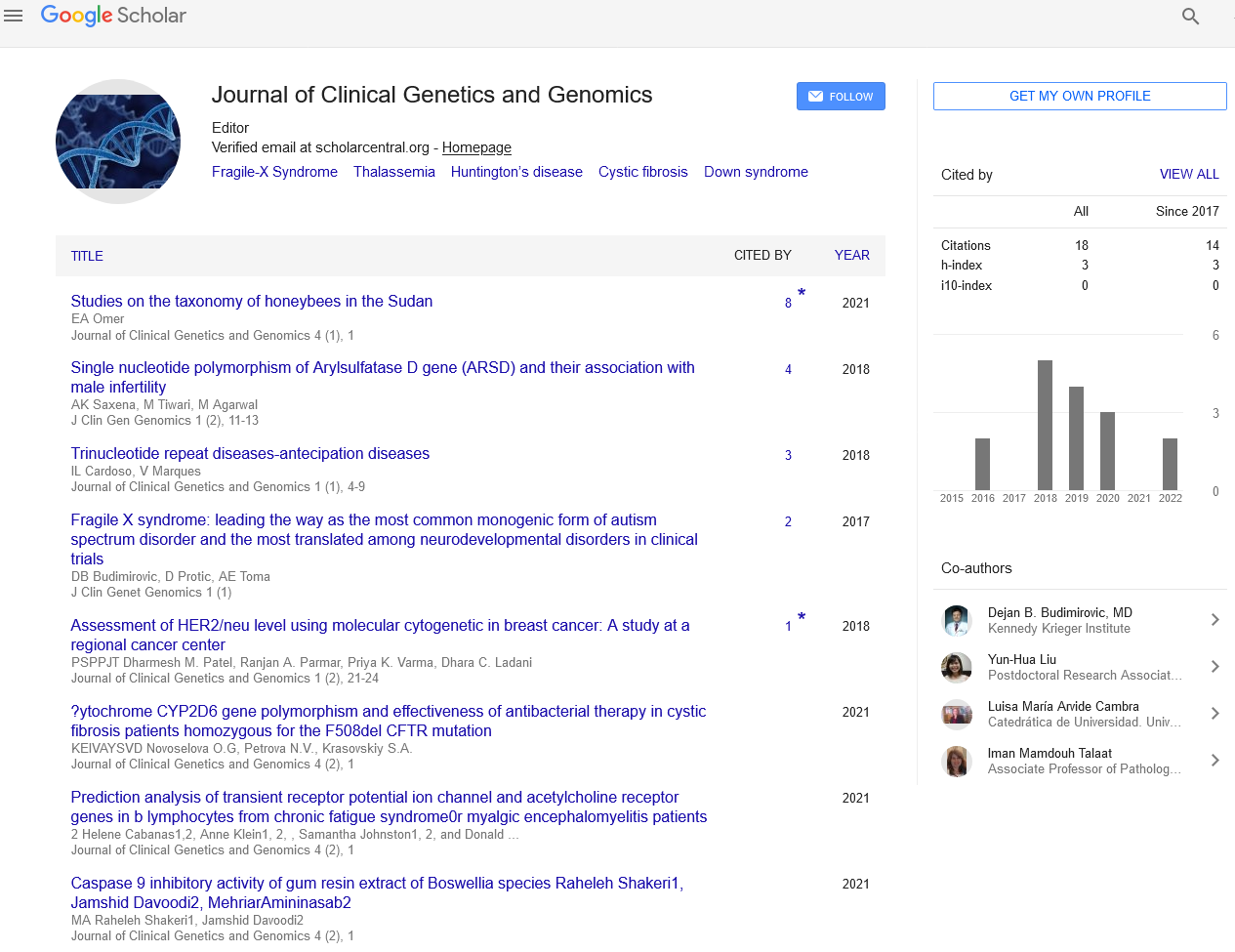Brief note on muscular dystrophy
Received: 01-Dec-2021 Accepted Date: Dec 14, 2021; Published: 21-Dec-2021
Citation: Palli J. Brief note on muscular dystrophy. J Clin Gen Genomics 2021;4(4):3.
This open-access article is distributed under the terms of the Creative Commons Attribution Non-Commercial License (CC BY-NC) (http://creativecommons.org/licenses/by-nc/4.0/), which permits reuse, distribution and reproduction of the article, provided that the original work is properly cited and the reuse is restricted to noncommercial purposes. For commercial reuse, contact reprints@pulsus.com
Description
Muscular dystrophy is a term that encompasses a set of over 30 inherited (genetic) disorders that cause muscle weakening. These symptoms are a kind of myopathy, which is a skeletal muscle illness. Muscles atrophy and weaken over time, reducing your ability to walk and perform everyday tasks such as brushing your teeth. Your heart and lungs may also be affected by the condition. Muscular dystrophy can manifest itself at birth or develop during childhood. Some kinds emerge later in life, in adulthood. There is currently no cure. Muscular dystrophy is a disease that frequently runs in families. A child with a muscular dystrophy parent may inherit a mutant (changed) gene that causes the disease. Although some people carry the defective gene, they do not suffer muscular dystrophy. These healthy individuals (carriers) can pass the virus on to their children.
Causes
Genetic transmutations, or variations, cause most forms of muscular dystrophy. One or both parents may pass a faulty gene to their child even if the parent doesn’t have the condition. Rarely, a person develops muscular dystrophy extemporaneously, meaning there’s no known cause.
Signs
Muscle faintness is the primary symptom of muscular dystrophy. Depending on the type, the disease affects different muscles and parts of the body. Other signs of muscular dystrophy include:
• Inflated calf muscles.
• Difficulty walking or running.
• Unusual walking gait (like waddling).
• Trouble swallowing.
• Heart problems, such as arrhythmia and heart failure (cardiomyopathy).
• Learning disabilities.
• Stiff or loose joints.
• Muscle pain.
• Curved spine (scoliosis).
• Breathing problems.
Analysis
If your healthcare provider suspects muscular dystrophy, you or your child may undergo one or more of these diagnostic tests:
• An enzyme and protein blood test looks for high amounts of creatine kinase, a type of enzyme. Muscle injury induced by muscular dystrophy might cause high levels.
• Electromyography (EMG) is a technique for determining muscle and nerve electrical activity.
• A muscle biopsy examines muscular tissue for cell alterations.
• Gene mutations associated to muscular dystrophy are discovered through genetic studies.
Treatment
Researchers are still looking for a way to cure muscular dystrophy. Disease symptoms get worse over time, but these treatments can help:
• Muscle strengthening and stretching are achieved through physical and occupational treatments. These treatments can help you keep your range of motion and function.
• Those who have difficulty swallowing can benefit from speech therapy.
• Corticosteroids like prednisone and deflazacort may help to reduce the progression of the condition.
• The surgery eliminates muscle stress and corrects spine curvature (scoliosis).
• Pacemakers and other heart assist devices are used to treat heart rhythm disorders and heart failure.
• Medical gadgets such as walkers and wheelchairs can help people move around more easily and avoid falling.
• Respiratory aids, such as cough-assist devices and respirators, help people breathe easier.
Complications
Muscular dystrophy affects your muscles, heart and lungs. As the disease progresses, you may be more prone to: Heart problems, such as arrhythmias and heart failure and Respiratory infections, including pneumonia.
• Breathing problems.
• Choking.
Women with muscular dystrophy can have healthy pregnancies. Because muscular dystrophy is inherited, you may want to talk to a genetic counselor before conceiving. During pregnancy, your healthcare provider will closely monitor your health to help you avoid these complications:
• Increased muscle weakness and limited mobility due to weight gain.
• Breathing problems due to added pressure on your lungs.
• Heart strain.
• Miscarriage (loss of pregnancy before the baby fully develops).
• Premature labor before the 37th week of pregnancy.
• Low birth weight baby, weighing less than 5 pounds, 8 ounces.





